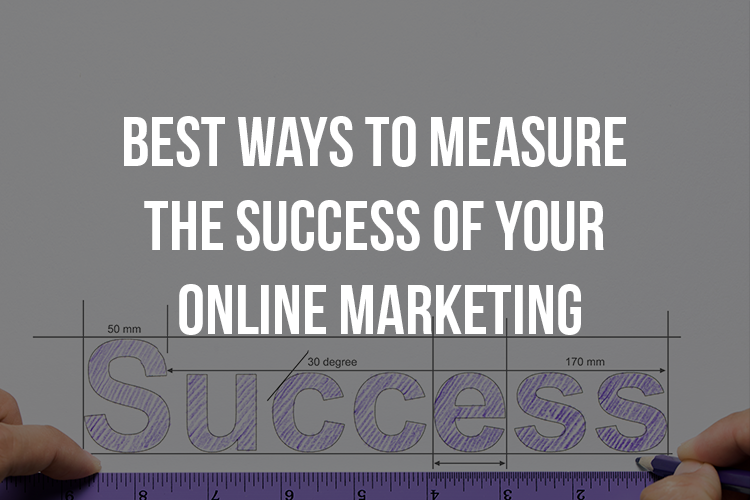Measuring the performance of your online marketing campaign is essential to determining its degree of success. By studying important marketing performance metrics, you can get valuable information about what is going right and what needs to be improved and worked upon. In this article, we will discuss in detail marketing performance management, its metrics, and important performance management tools. Let us start on the topics below.
What Is Marketing Performance?
To determine the effectiveness of their marketing strategies, marketers use various methods to measure marketing performance. Marketing performance refers to the metrics and results achieved by a marketing campaign or strategy, which are used to determine whether the goals set have been met. To measure marketing performance, marketers use various metrics and KPIs, or Key Performance Indicators. These may include cost per sale, cost per lead, ROI (Return on Investment), conversion rate, and customer lifetime value. By using these metrics to measure marketing performance, marketers can identify which campaigns or strategies are performing well and which ones need improvement. This helps them to optimize their marketing efforts, allocate resources effectively, and ultimately achieve better results.
Marketing Performance Management
Marketing performance management is planning a future marketing strategy based on predictive analysis. It uses technologies and services to analyze data, gain valuable insights and thus make predictions. Then it is executed to optimize marketing programs, campaigns, and other resources. These planning and strategy-creating activities and their execution all come under the MPM area. These marketing performance management activities need to be measured at regular intervals to determine their effectiveness. Adjustments and tweaks should be made so the marketing strategy can perform to its full efficiency.

Our tailored customer-centric approach in marketing maximizes sales.
Search Engine Marketing:Drive traffic, boost conversions & grow your business
Social Media Marketing:Maximize your social media potential & engage with your audience
LinkedIn Marketing:Unlock the power of LinkedIn!
Video Production & Photography:Elevate your business with captivating visuals
How to Measure Marketing Performance?
Marketing needs measurable ROI. In other words, measuring marketing performance is essential. It allows you to monitor the success of marketing activities and lets you optimize them to deliver better results. Here are some ways you can measure your marketing performance.
1. Revenue & Sales
The first step is to check the amount of revenue the marketing performance has generated for your business.
2. Leads
Your marketing strategy may be focused on driving leads through conversion points like online form submissions, live chats, etc. Track all these entry points to the volume of leads you are achieving through your marketing efforts
3. Customer Retention & Loyalty
Customer retention is generally applicable to those businesses that have a subscription model or depend on repeat business. Customer loyalty may mean viewer engagement, customers acting as brand advocates and giving you repeat business.
4. Lead Management
Lead management is mostly handled by the sales team by contacting the lead and drives them further down the sales funnel so the conversion happens.
5. Brand Awareness
Brand awareness means determining your brand reach through calculating direct traffic and organic traffic for your brand name. It may also include calculating the number of social media followers, the number of online brand mentions, and the number of inbound links among others.
6. Engagement
Engagement determines the engagement level of your potential and current customers with your content and marketing campaigns. It includes social media content, website content, and email engagement.
Some popular engagement metrics are:
- Social engagements include the numbers of likes or comments received.
- Website engagement that includes the number of page views and time spent on page etc.
- Email engagement that includes click-through rates and open rates etc.
Key Marketing Performance Metrics
Given below are the key marketing performance metrics for your online marketing channels.
CPA
CPA or Cost Per Acquisition is the amount you spend to acquire a new customer. This may differ by marketing channel, campaign, and even by the time of the year. It can be calculated by dividing the Campaign cost (marketing spend) by the number of conversions (number of customers acquired).
Cost Per Acquisition (CPA)= Campaign Cost/Number of conversions
A good CPA changes according to business domains. A lower CPA is considered great for your marketing efforts.
CPL
CPL means Cost per lead. It measures the amount spent on getting a new lead through channels, campaigns, or overall spending. This metric helps determine better goals, adjust budgets and track ROI. Paid ad placements and social media monitoring platforms are included in the budgets related to CPL.
Total CPL= Total amount spent on marketing/Total number of new leads acquired for the period
Calculate the CPL every quarter for getting clarity and insights. Ensure to record from exactly where an individual lead came from.
CLV
CLV or Customer lifetime value is the total projected amount a single person or account will spend on your business from the time of the first purchase to the last. CLV lets you find out the high-value customers so you can create campaigns to retain them for a long time. CLV takes into account your business’s pricing model, any potential upsell you can provide in the future, and forecasting data making use of old data of similar customers.
CLV = Average Customer Value X Average Customer Lifespan
CTR
CTR or Click-through rate means the number of times a link, website, or ad is clicked as per the number of impressions received. A high click-through rate means the content or ad copy displayed is of high quality and effective. A CTR of 4 percent or above is considered high. The marketing platforms you use provide tools to calculate CTR. Other than that, there are numerous online tools that help you calculate this metric.
Bounce Rate
Bounce rate means the percentage of viewers who visit your website and leave right after. A high bounce rate implies that your ad copy, content, or offer is not engaging enough to keep visitors on the site. Another reason could be that the copy is not aligned to your marketing goals, doesn’t solve the viewers’ issues as promised, or has a bad landing page experience. A high bounce rate leads to sales pipeline breakdowns and raises the cost of your PPC campaign. To decrease your bounce rate, ensure that your CTA is compelling, relevant to the offer, and defines clearly what steps should be taken by the visitor. A website should have a bounce rate under 40% to be considered successful.
Conversions
Conversions also called goal completions are the actions taken by the customer on what you planned them to do. Subscribing to your emails, adding their emails to receive an e-book, or clicking a CTA button on the sales page are all examples of conversions. You can measure at any funnel stage using this metric. It is easily measured by the tools available for different online marketing platforms.
Lead-to-customer Conversion Rate
This marketing performance metrics measure the number of leads that actually turn into customers. Knowing it gives insight into the needs of the sales team.
Multi-touch Attribution
Measuring marketing performance is crucial for understanding how your efforts are impacting your potential customers’ journey from initial contact to making a purchase.
Your potential customer may not buy or use your services at the first point of contact. They may research about it, visit your website, read your content and blogs, and then make a decision. Measuring marketing performance involves tracking all of your marketing efforts involved from start to finish. There are several types of attribution models that you can use to measure marketing performance depending on your marketing strategy and the business you are in. By using attribution models to measure marketing performance, you can gain insights into which marketing channels and tactics are driving the most conversions and optimize your marketing strategies to improve your overall ROI.
Engaged Time
Engaged time means the time spent by the viewers when they are actively paying attention to your content. It can be calculated by content analytics software and even by WordPress plugins that track viewer activity on your pages like clicking, scrolling, or using the keyboard.
Social Media Engagement
Social media engagement means the level of engagement of users of these platforms and your followers with your posts, handles, and brand and the demographics of these followers. Use this data to determine the effectiveness of your social media content and alter it so it reaches the targeted audience at the right time.
Website Conversion Rate
Measuring website conversion rate is an important aspect of measuring marketing success. It simply means determining if the visitors to your website are performing the desired Call to Action as you designed. To measure it effectively, it is important to first define what qualifies as a conversion. Once you have done so, set up a landing page that visitors will reach only after the conversion has taken place. This landing page can be used to track the success of your marketing campaigns and measure marketing success. By measuring your website conversion rate, you can determine the effectiveness of your marketing strategies and make data-driven decisions to optimize them. This helps you to measure marketing success and identify areas for improvement. You can use different tools to measure website conversion rate, such as Google Analytics or other website analytics tools. By using these tools to measure marketing success, you can get a clear picture of how your marketing efforts are performing, and make necessary changes to optimize your campaigns for greater success.
Marketing Performance Measurement Tools
After metrics, we move on to performance measurement tools for your marketing activities. These tools help you measure marketing success and track your progress towards achieving your goals. In online marketing, along with sales and revenue, visibility, brand engagement, increase in social media followers, high ranking in organic search results among others are considered as markers of success. To measure marketing success, you can use the below mentioned tools to track and analyze the different performance metrics as per your marketing goals. By using these tools to measure marketing success, you can gain valuable insights into your audience’s behavior and preferences, and make data-driven decisions to improve your marketing strategies and drive better results.
HubSpot
HubSpot is an all-in-one solution to inbound marketing and automation. You can run campaigns, monitor, and track them through HubSpot. You can use its dashboard to monitor the performance of your website, landing pages, social media channels, and CTA. You can track the number of visitors, the number of inbound links you are getting and compare your performance with your competitors. You can also use its SEO tools to check your website’s organic ranking and the performance of your specific keywords.
Google Analytics
Google Analytics is a marketing performance measurement tool that is used by the highest number of users on the internet. It integrates directly with Google Ads so you can use it to get reports on your PPC campaigns. Use Google Analytics to monitor and get reports on conversions, bounce rates, page views, segmentation, and visitor acquisition to know about the performance of your marketing campaigns. You can also use its eCommerce reporting tools to keep tabs on sales activity and performance.
Hootsuite
Hootsuite is used to manage multiple social media channels in one place and also has some great inbuilt reporting tools. Use these tools to get real-time analytics of social media metrics that include followers, engagement, mentions, and clicks on links in your content. It also lets you monitor the performance of your social media team in response to messages received. With Hootsuite, you also get reports on different market segments that discuss your brand and whether the reaction it receives is positive, negative, or neutral. Hootsuite’s reporting functions make it easy for you to determine the ROI of your social platforms.
Mixpanel
Mixpanel is a great marketing performance management tool designed for tracking app and mobile site performance. You can check if the users are coming back to your app again and what adversely affects their experience. You can measure the success of your marketing plan compared to before through its simple A/B testing methods.
Megalytic
Megalytic allows you to pull the data from different sources. It makes it easier for you to generate reports across a large number of different metrics pulled from different sources like Google Analytics or Ads.
Salesforce
Salesforce is a CRM tool that helps you get all your customer information in one place. Its analytics tool known as Wave Analytics shows a clear picture of your marketing efforts on sales. Its custom dashboards help you get instant access to any KPIs or particular metrics that helps you judge the success of a particular campaign.
Conclusion
So, these are the best ways you can measure the success of your online marketing campaigns. Use the above tips to measure your marketing performance metrics, optimize your marketing strategy and get better conversions and return on investment.



